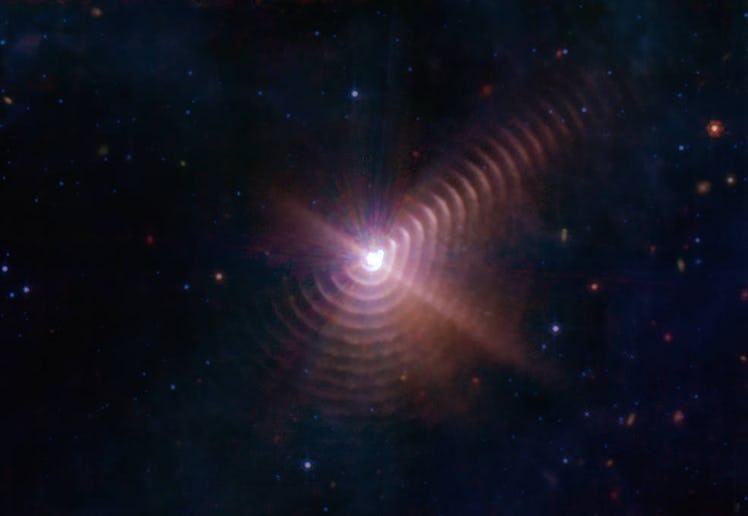This New Deep Space Photo Looks Exactly Like a Human Fingerprint
The new JWST photo looks like a fingerprint in space ... but it’s really just a great lesson in stellar winds, and the mysteries that abound in deep space.

The James Webb Space Telescope has released a new photo of the wonders beyond our blue planet, and as expected, it’s another really awesome look at space like we’ve never seen before. The telescope continues to wow us with each new photo; this new one is no exception.
If your kid is fascinated with outer space (i.e. they are a kid) this photo is a great way to teach them about stellar winds — and what happens when two stars interact with each other. It’s also just a very cool deep space photo for them to check out. Here’s what’s going on.
Can You Explain What This ‘Fingerprint’ Photo Is Like I’m 5?
Surely! While this newest photo from JWST looks like someone accidentally put their finger on the camera lens and snapped a photo, it’s actually way cooler than that.
According to NASA, what we’re looking it is two stars that came close together — essentially blowing on each other — causing dust to throw into the air, creating these rings that look like fingerprint lines.
The two stars are 5,000 light-years away from us, and together they’re called the Wolf-Rayet 140. Each of the two stars has its own orbit, like how the Moon works around Earth. NASA says that every eight years, the stars orbit closer to each other.
When that happens, the stellar winds from both stars collide in a way that causes dust to be thrown up and around. And what we see in the photo is actually just a whole lot of dust and gas. Each loop marks the passage of time, since the rings don’t appear to go away. In other words: it’s a lot of dust.
“We’re looking at over a century of dust production from this system,” said Ryan Lau, an astronomer at NSF’s NOIRLab and lead author of a new study about the system, published in the journal Nature Astronomy.
This isn’t the first time NASA scientists have seen these rings. They’ve been photographed before with the agency’s older telescopes. But the power of the JWST telescope has allowed scientists to see this “fingerprint” with more detail than ever before. Before, scientists were able to see two dust rings around the stars. Now, with the JWST, they’ve counted “at least 17 of them.”
Really cool, right? For more information, be sure to check out NASA’s write-up of the mission and findings.